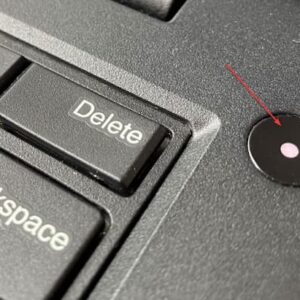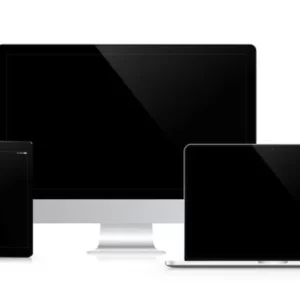Can you use an all-in-one computer as a monitor? The answer is based on the hardware in your AIO computer. A computer must have a display “IN” port in order to be used as a monitor. Only display OUT ports are typically present on all-in-one computers. Consequently, you cannot use them as monitors.
Some people advise using software to mirror the content of the other display to your all-in-one computer. Although this suggestion might be effective, the display is typically subpar. In the end, it defeats the initial intent behind using your computer as a monitor.
One of the most common input connections for all-in-one computers is HDMI. Therefore, if the second monitor does not support HDMI, you can use a USB Display Adapter to connect it to your all-in-one computer.
One or more external screens are supported thanks to USB adapters that connect to USB ports. They can run desktop applications and play full-screen videos in spite of their lack of 3D support.
Table of Contents
What Are All-in-one Computers?
Touch screens, pads, powerful memory, and random-access memory are frequently found in all-in-one computers. In addition, they are more streamlined and have a lower profile than standard desktop computers.
All-in-one PCs, also known as AIO computers, are the technology that is best suited for all business types. These people are extremely effective at what they do. They have the appearance of being skinny and small.
A large, sharp monitor is a standard feature of almost all AIO computers. The display of an AIO device serves as its primary component because it houses all of the accessories typically found in a desktop PC’s cabinet.
Can You Use An All-In-One Computer as a Monitor?
It is possible to use an AIO as a second monitor if it has a Display IN port.
A monitor needs a “Display IN” port to show the operations of a separate tower or computer.
AIOs frequently lack a display IN port, though, as they typically house a motherboard, CPU, GPU, and other components.
In these circumstances, some people use software to mirror the contents of the other monitor on the AIO, which typically leads to a subpar display.
There are many AIOs that only have HDMI ports for input.
If a second monitor does not have an HDMI port, you can still connect it to your AIO using a USB display adaptor.
You can have at least one additional screen when you connect a USB Adapter to the USB port on your monitor.
Running software and watching full-screen videos won’t be difficult, even though they typically lack 3D support.
How Can You Use An All-in-One Computer as a Monitor?
If you have an extra all-in-one monitor and want to use it as a display for another computer, consider the following tools:
Ports
All other accessories are crammed behind or beneath the high-resolution screen, which is the essential component of an AIO.
Since the monitor isn’t a standalone piece of equipment, additional hardware is needed to use it as a second monitor.
If your AIO has a display-in port, all you need to do to use it as an additional monitor is to connect its input port to the main computer’s out port with a display cable.
Keep in mind that these two ports need to be the same type.
You’ll need to use an adapter if not.
Look for an “IN” label on your to locate the input port using AIO.
It’s likely an out port if the port has no label.
If you have trouble locating the appropriate port on your computer, look up the model online or refer to the specs sheet.
Unfortunately, the majority of AIOs only have a display Out port, making it challenging to use them as monitors for other computers.
If you can find the right port on your AIO, you can connect it to another computer using the following instructions:
A. Hdmi
If the AIO and the main computer both have HDMI ports, you can just plug the HDMI cable into the AIO’s in and out ports.
The primary computer will use the AIO as its secondary monitor once it is connected.
If you need to change the display settings on your Windows device, search “display” from the search bar on the primary computer and adjust the resolution, brightness, or any other features you prefer.
To do so on a Mac, you can search “display” on Spotlight or open System Preferences and click Displays.
Note. The HDMI port on the AIO monitor must be an In port.
It cannot connect the devices if that is the case.
B. DisplayPort
More recent than HDMI, DisplayPort is gradually taking over.
Display ports are identical to HDMI for connecting two devices, and the display settings on the primary PC can be used to control the AIO.
C. Vga
You might not find many computers with VGA because it is an outdated connection type.
You can use your AIO as a second monitor, though, if your AIO has a VGA-in port and your primary computer has a VGA-out port.
As with the connections mentioned above, the rest are similar.
If your computer has a VGA port but the AIO does not, you can also use converters.
D. USB Converter
If your AIO lacks these input ports, you can use a USB converter to connect it to another PC.
Hardware for converting the signal from the ports is already present in USB converters.
Select a converter that matches the output port on the main computer and the USB type on the AIO if you want to use your AIO as a secondary monitor.
There are two primary USB connection types: USB 2.0 and 3.0 share the same connection type, whereas USB-C uses a different one.
Other Tools
A. Windows 10 PC Projection
Some Windows 10 computers support an option called “PC projection,” which allows you to use your AIO serving as a backup monitor.
To ensure both computers support it, open the search bar on each of them and type “PC projection.”
Open the PC projection settings and then review the specifications.
Follow the instructions in the setting to cast content from another PC to your AIO if both of them support it.
B. Software
Today, some software, like Remote Desktop, can establish a WiFi connection between two operating computers.
Some people believe that this software can replace the AIO’s absence of a display out port.
Having a second monitor is not how this method works, though.
Simply put, you are operating your AIO computer from a different computer.
The ability to drag windows or files between monitors is thus not available.
What you do on one PC can only be projected onto two screens.
Some risks come with using this software.
Just download from reliable sources to avoid giving others access to your device.
Although Microsoft and Apple both have their own remote desktop programs, if you can’t use them, stick with trusted names.
C. WiDi
On some PCs, WiDi, an outdated wireless connection from Intel, is still functional.
If all else fails, check to see if the main computer and AIO model support it.
If they do, adhere to these instructions to set up your AIO as a monitor for a different PC.

How Can You Connect a Monitor to Your All-In-One Computer?
Numerous all-in-one models are devoid of video ports, making it impossible to connect to an additional monitor. AIO computers, at best, only have an HDMI port as an input.
A video cable is required to connect a second monitor to your all-in-one computer. You will require an adapter if the inputs on your monitor and AIO PC aren’t the same.
You can connect your computer to a USB video adapter by using the appropriate wires and inputs. The USB video adapter will connect to the computer using a USB port. A USB video adapter can support HDMI, VGA, and DisplayPort connections.
You can use the second monitor if your all-in-one computer has HDMI, DisplayPort, or Thunderbolt ports that are also compatible with the second monitor.
Connectors and Adapters for Connecting All-In-One Computers
If you’re using an HDMI to HDMI connection, we advise using a high-speed HDMI male-male cable for best results.
For your single HDMI input, there are additional choices. Utilize an HDMI to VGA adapter to connect to older displays. For a DVI monitor, you can also use an HDMI & DVI cable. Other suggestions include using a DisplayPort to DVI or HDMI adapter if your all-in-one computer has a DisplayPort input.
Dual Monitor Display Modes for All-In-One Computers
Once connected, you can use the all-in-one dual monitor setup in three different ways: as a second screen, an extended screen, or a projector.
In contrast to an extended screen, which combines all connected displays into a single big screen, a duplicate screen shows the same content on each connected monitor.
The information will be shown on the external display while the built-in display is disabled by the projector.
On your Mac or Windows computer, these choices can be found in Display Settings.
Read about Can I Leave a Computer Monitor in a Hot Car?
How to Troubleshoot An External Monitor?
Even after reconnecting your external displays, you may occasionally still experience blank, green, or blurry displays. Despite how annoying it might be, you can troubleshoot and come up with workable solutions.
Consider the following suggestions:
- Restart all connected devices
- Double-check your hardware and cable connections for any potential damage.
- Make sure all of your connections work together. It is crucial to understand that connections’ physical compatibility is not always sufficient.
- Recognize the operation of your connections. Some adapters only work in one direction. DisplayPort to HDMI is a frequent illustration.
- Make sure your operating system and firmware are current. Make sure their configuration is correct as well. Hardware issues can occasionally be resolved with just a firmware update.
How Can You Use An AlO Computer as a Gaming Console Monitor?
Using a connection cable, you can use an AIO computer as a gaming console monitor if it has a compatible input port, such as HDMI or DisplayPort.
The mouse and keyboard can control your AIO computer even when it is in display mode, so keep that in mind.
To avoid unauthorized changes, save and close all open files before connecting the devices with the HDMI cable.
Use the proper cable as well, taking into account the ports on both devices.
To connect an HP Omni27 AIO to a video player or gaming console that supports HDMI video, for instance, you can use an HDMI connector or composite audio-visual (A/V) connectors.
To do this, make sure both devices are powered on and then connect the cable with the gaming console or video player on one end and the AIO on the other.
If you use external speakers, connect their audio cable to the A/V connector.
Utilize the AIO’s display menu buttons or the remote control to modify the display’s settings, such as brightness, color, or contrast.
After you connect the devices with a cable, many AIOs will instantly accept the signal and display the game.
If your AIO has trouble doing so, you’ll have to push the display source button at the back of your PC, which might be labeled as “Input Switch.”
Read the instruction manual or conduct a search on the manufacturer’s website if you still can’t find it.
Issues You Might Face and Their Solutions
There could be a number of difficulties connecting your AIO to a gaming console.
Here are some problems with the HP Omni27, one of the most popular devices, along with instructions on how to fix them.
A. AIO Has Trouble Remaining in the Gaming Mode
If both the devices are on, but the display keeps going back to the PC mode or doesn’t receive a signal:
- Make sure the HDMI cable is connected to both devices by checking.
- To make sure you selected the Game mode, check the Display menu.
B. Sound Problems
If when you switch to Game mode and start playing, the sound drops:
- If the system is muted, check it. To turn off the mute, press the Volume key.
- Adjust the volume by opening the Display menu.
- To find out if the audio format is compatible with your device, check the game’s audio settings. (The HP Omni27, for instance, only supports PCM Audio and Digital Stereo.)
C. Returning to the PC Mode
To return to the PC mode after your game is done, use one of the following methods:
- Push the Escbutton on the keyboard.
- Left-clickon the mouse.
- Press the Del, Ctrl, and Altbuttons on the keyboard simultaneously.
- Push the Power/Sleepbutton on the keyboard or the remote control.
- Press the Power/Sleepbutton on the computer.
- Push the Startbutton on the remote control.
Pros of Using An All-In-One Computer
All-in-one computers have a few advantages over traditional desktop computers. They are regarded as user-friendly and simple to use, in addition to saving desk space and having fewer cords, in part because of their large touch-screen interfaces.
These computers function just as well as, if not better than, laptops or other portable computers.
Conventional desktop computers are larger because of the extra room in their storage cabinets. Having more space has the benefit of making replacing and getting to parts simpler.
Cons of Using An All-In-One Computer
Laptops pose a serious threat to all-in-one computers. AIO computers might be more transportable than desktop computers. In this regard, laptops are much superior. Laptops have consequently replaced other devices as the norm for both individuals and companies.
The inability to upgrade or modify the components of all-in-one computers is one of their biggest drawbacks. Replacement of the entire system is necessary if one component is damaged.
What Else Can You Use as a Monitor?
You don’t need to run out and purchase a second monitor right away if you don’t have an AIO to use as a secondary display if you want more screen real estate.
Just take a look at the options below.
Laptop
Most of us keep at least one extra laptop at home.
If your laptop still works and is running Windows 10, you can connect it to your computer as an extra display.
No cables or particular ports are required for this wireless method, which uses Miracast.
Follow these easy steps:
- Turn on the laptop you want to use as a second screen and open Settings.
- Click Systemfollowed by to this PC, projecting.
- Adjust the settings.
- Go to the primary laptop or PC, press the WindowsKey + P, and hit “Connect to a Wireless Display” at the bottom (your WiFi should be connected to the computer.
- Hold off until the second laptop is found.
- Choose between duplicating it and extending it after selecting it. Extend refers to the second laptop’s second screen, which gives you more room. Duplicate means that the second screen will only reflect the information on the primary screen.
Note. If it’s not already enabled, you can turn on the Connect to a Wireless Display option in the settings.
Right-click the Start button and go to Settings > System > Projecting to this PC > Optional features.
Search for Wireless Display and include it in the settings.
Tv
A TV is a second option for a second monitor that each of us has at home.
You can set up your modern television as the primary or secondary display for your PC or laptop by following a few simple steps and using no additional cables or adapters.
- Find the ports on your television and computer. The best options are HDMI and DisplayPort because they can send both audio and video.
- Check to see if the ports on your computer and television are compatible. You will need to purchase an adapter if they don’t.
- Connect the proper cable to the output port on your PC and the input port on your TV.
- Activate the input menu on the TV using the remote control, then choose the port you’re using (such as HDMI 1).
- Choose the Windows logo to launch Windows 10. Then click Settings after scrolling to the bottom and choosing the gear-shaped icon. Then click System > Displayand select “extend these displays” under the “Multiple Displays” section.
- For Mac, click the Applelogo > system preferences > Displays. Uncheck “mirror these displays,” and if the image isn’t as large as you like, select “scaled” and adjust the “underscan” slider.
Things to Consider before Purchasing An All-In-One Computer
Before purchasing an all-in-one PC, you should consider a few factors. You ought to buy a computer that will serve you well for both work and entertainment.
Ease of Installation
A traditional desktop computer requires much more setup effort than an all-in-one device. Some computers, depending on the brand you select, have removable supports you can use to fix your computer quickly.
Cost-effective
An AIO computer is a more economical choice than a desktop machine.
If you want to set up a workstation, you’ll need to purchase each component separately, including the monitor, speaker, CPU, keyboard, and mouse. However, an all-in-one computer comes with a full workstation.
Portability
They’re more portable than a traditional desktop computer because the majority of AIO computers weigh less than 10 kg.
If you need to rearrange your office or room, you can do so without any hassle.
Frequently Asked Question
Do Dell Computers Have An HDMI Port?
For the plug or device connected to a port on a Dell computer, a connector or port has either holes or a slot. A digital video standard that takes the place of the DVI-HDCP video standards is HDMI (High-Definition Multimedia Interface).
Can You Use An All-in-one Computer as Just a Monitor?
Utilizing the available HDMI port, you can, if desired, attach a second monitor to your All-in-One computer. The All-in-one computer, however, cannot be used as a monitor. It operates similarly to how the video ports on any video card do, in that they can only be used for video OUT and not video IN.
Does Asus All in One Have HDMI Input?
Superior audio quality is provided by ASUS M241’s exclusive ASUS SonicMaster technology. In addition, the ASUS M241 has an HDMI-in connector that enables you to connect video and audio from any device with an HDMI output, giving your computer, mobile device, game console, or even set-top TV box an amazing huge experience!
Can I Use My Asus All-in-one Computer as a Monitor?
The ASUS All-in-One PC can function as a regular computer LCD monitor when connected to a HDMI source. The brightness in HDMI System mode can be decreased using this button.
Conclusion
Because of their large touch-screen interfaces, ability to conserve desk space, and reduced number of wires, all-in-one computers are regarded as being user-friendly and simple to use.
You can proceed if your all-in-one computer’s HDMI, DisplayPort, or Thunderbolt connectors work with the additional monitor. Connect to older displays using an HDMI to VGA converter.
With a DVI display, you can also use an HDMI – DVI cable. A DisplayPort to DVI or HDMI adapter is also advised if your all-in-one PC has a DisplayPort input.
Finally, by disassembling your AIO PC, you can use it as a monitor. I hope this article will help you usean A computer that can function as both a monitor and an all-in-one.





